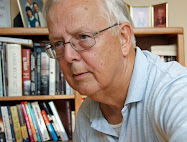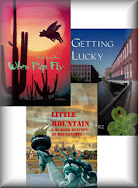It's been a good day. The El Paso Writers' League holds an annual writing contest for its members, and prizes were given out today. I won a second prize for Children's Poetry, a first prize for Reminiscence, and a first prize as well as a Best of Best for Fiction. One great aspect of the contest is that the outside judges return critique sheets to the entrants.
Here is my Reminiscence essay:
When the Lings came to Lowell
We met the Ling family at Boston’s
Logan Airport in January 1980. They were
a Cambodian family of four that had just arrived from the Site 2 refugee camp
in Thailand. The man clasped his hands together to greet my wife and me.
Cambodians call the gesture sampeah, which
is both a greeting and a sign of respect. He introduced himself and his family:
Song, his wife Sceur Ly, their infant Es, his ten-year-old sister-in-law Tong.
Only Song spoke, using halting English. He wore a short-sleeved shirt, wrinkled
pants, and sandals. Sceur Ly wore a dirty sampot,
or sarong. She held Es in her arms. Tong’s clothes looked like rags. Both
sisters wore blank expressions on their faces. All their belongings were in one
bag of tattered cloth attached to a stick.
As their sponsors, we took them to
our house near Lowell, Massachusetts, and showed them their bedroom next to
ours. We introduced them to our six-year-old son Jeff and our dog Divot, then
showed them around the house. Song marveled at the toilet.
That night we heard constant
moaning. Sceur Ly’s teeth had all rotted, and her agony kept her awake. Song’s
body shivered. He had a circular welt on his forehead where he had treated
himself for a headache—Asian suction cup therapy involves a small cup and a
flame to cause a vacuum against the skin. My wife gave him Tylenol and placed
her hand on his forehead. It felt like a hot skillet.
The next day, a dentist removed all
of Sceur Ly’s teeth, and a doctor diagnosed Song with the first case of malaria
the doctor had ever seen. In the next several days, all the children came down
with colds, and I contracted double pneumonia. My wife stayed healthy.
Why did the Lings come to America?
In 1975, silence had descended on
Cambodia, which shut itself off from the rest of the world. For four years,
nothing but stray rumors escaped the Southeast Asian nation. In 1979, communist
Vietnam invaded Cambodia and toppled the Khmer Rouge regime that had murdered
more than a million of its own countrymen. A mass exodus of refugees followed,
with hundreds of thousands of people walking through the jungle to makeshift
camps in Thailand. There they huddled and received humanitarian aid from many
countries and organizations. But the camps were meant to be temporary, and many
refugees found homes in France and the United States.
Lowell, Massachusetts became a
major destination for many Cambodians. One reason was the presence of Wang
Laboratories, a major employer in the city during the 1970s and 1980s. That the
company’s president was the Chinese-born Dr. An Wang may have helped convey an
aura of openness to foreigners. Wang Laboratories employed many of the
newcomers, who earned a reputation as diligent workers. Massachusetts also
provided benefits more readily than some other states, and the growing number
of refugees fed on itself and attracted more.
The Lings were one of the first
refugee families in the area. Outside of the usual milestones every family
faces, sponsoring them was the most momentous experience of our lives. We
learned about human generosity and prejudice, cultural conflicts, our country,
and ourselves. Friends and strangers donated clothing, dishes, soap, food, and
a little money. We also received a couple of anonymous letters and phone calls
suggesting that we and the Lings should all go to Cambodia and stay there. A
letter addressed to Tong contained a newspaper photo of her face, marked in ink
with horns and sharp teeth, like Satan. We never told her about it.
They spent seven weeks in our
house, far longer than the few days refugees spent in other sponsors’ homes. We
should have let them go their own way sooner, but we all bonded, and the crises
seemed to come one after another. We also wanted to make sure they found jobs
so they wouldn’t need charity.
America was an alien land. Song
looked around at New England’s bare trees and asked my wife, “Missy. Why all
trees are dead?” One day he said, “Dogs taste good. In Cambodia, dog number
one.” That worried me, because they spent plenty of time alone with Divot. So I
looked him in the eye and said, “You hurt my dog, you number ten!” He got the message, and Divot was
safe. But Song’s biggest difficulties came with his family. In America, women
had too much freedom. Sceur Ly and Tong learned that they could make many of
their own life decisions and have the support of their American friends. In
time, Song came to see me as weak because I often deferred to my wife’s choices
and never hit her.
Tension simmered inside their
family when my wife, son and I were away at work and school. Song quickly saw his
authority eroding in a new society where women were not subservient. Thus he
was happy to finally get his own apartment, where he expected to re-assert
himself with force. We broke up more than one altercation, telling Song that
wife-beating was illegal. When he
protested that it was a “Cambodian custom,” we made it clear that such
“customs” would land him in jail. Sceur Ly came to us privately to ask for help
in obtaining a divorce, but when given the chance she never followed through.
Song’s rapidly growing English
skills made him important among the newer refugees. He translated many
conversations and documents for them but gained a reputation for cheating his
own people. Rumors began to circulate among both Cambodians and Americans that
he had been Khmer Rouge. As angry as his wife and her sister were with him,
they denied the charge. He was a bad man, they said, but not that bad.
Nothing could ignite Song’s anger
more quickly than his young sister-in-law, who defied him whenever she could. Tong
went to public school and excelled, becoming ever more eager to stay away from
him. We stayed close to the women of the family for years, meanwhile learning
about the rest of the family left behind at the Site 2 refugee camp in
Thailand. Among them were Sceur Ly and Tong’s parents and siblings. Their
attempts to reunite were met with continual failure. They asked us and other
Americans to help.
It took community involvement,
filling out immigration forms, speaking with the State Department, and engaging
local Congressman Chester Atkins, but eventually the entire family was reunited
in Lowell. That doesn’t mean an entirely happy ending, though. Atkins’s
high-profile efforts stoked resentment among many of his constituents who felt
he wasn’t paying enough attention to their concerns, and he was defeated in his
re-election bid. Some citizens felt that the government was giving too much to
the refugees. One man complained on the local TV news that Cambodians were
being given new cars, which was untrue.
For the most part, the Cambodians
assimilated reasonably well. Many became citizens, and some migrated back to
Cambodia once it became a safer place. Some became doctors and lawyers in
Lowell; one became a city councilor. Tong earned a bachelor’s degree from
George Washington University. Song became a landlord. Tom Brokaw produced a
nationally televised feature about the family. One night, we watched Song on
television, telling Brokaw that he worked hard but that his fellow Cambodians
were lazy.
In time Song and Sceur Ly moved to
Rhode Island, and we began to see them much less often. But every few months
our doorbell would ring, and there would be Sceur Ly with a warm smile on her
face. In one hand she would be holding her son Es, and in the other a box of
jelly donuts from Dunkin’ Donuts. We never knew she was coming, and she never
showed up without a gift.
We lost track of them a decade ago,
and perhaps it’s just as well. They have an extended family within reach now,
with all the joy and pain that can bring. Now we live in New Mexico, over two
thousand miles away, but we will always have the rich layer they added to our
lives.











.JPG)
.jpg)
.jpg)

















